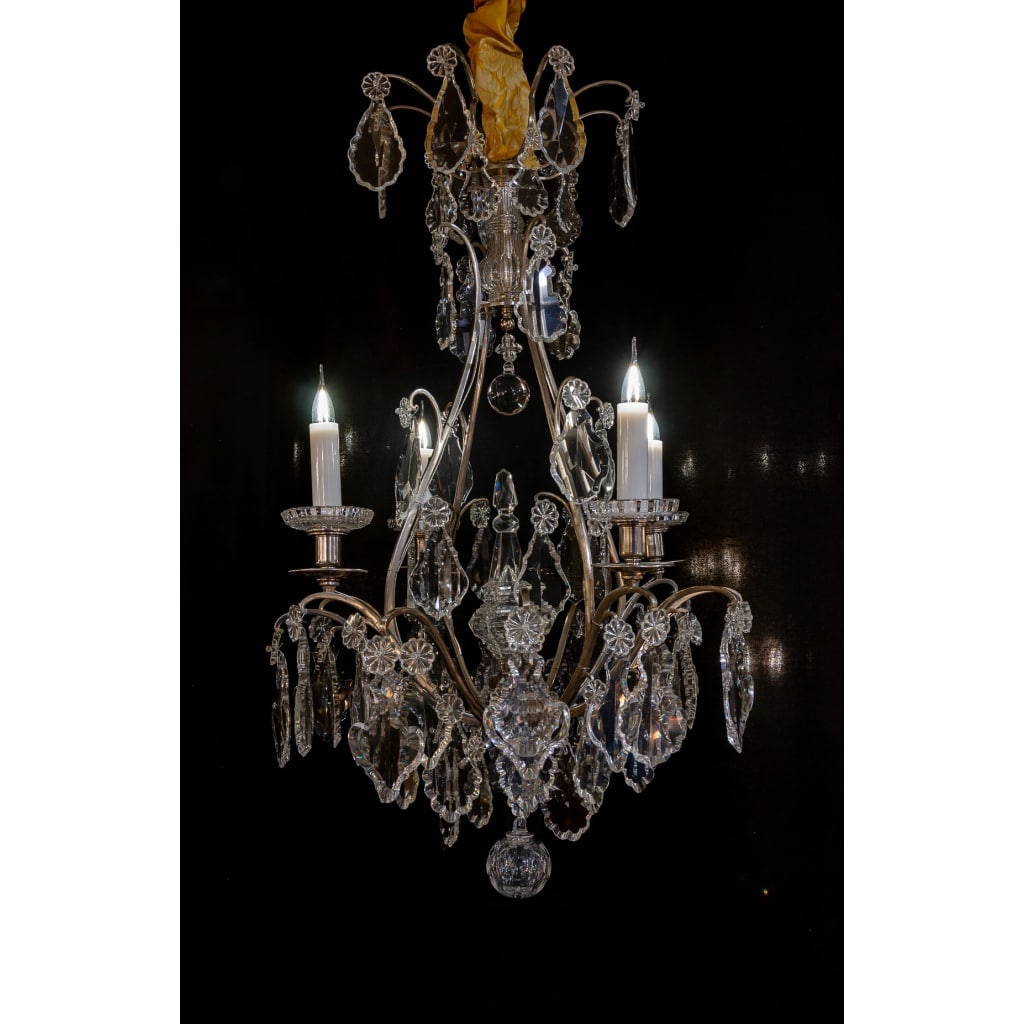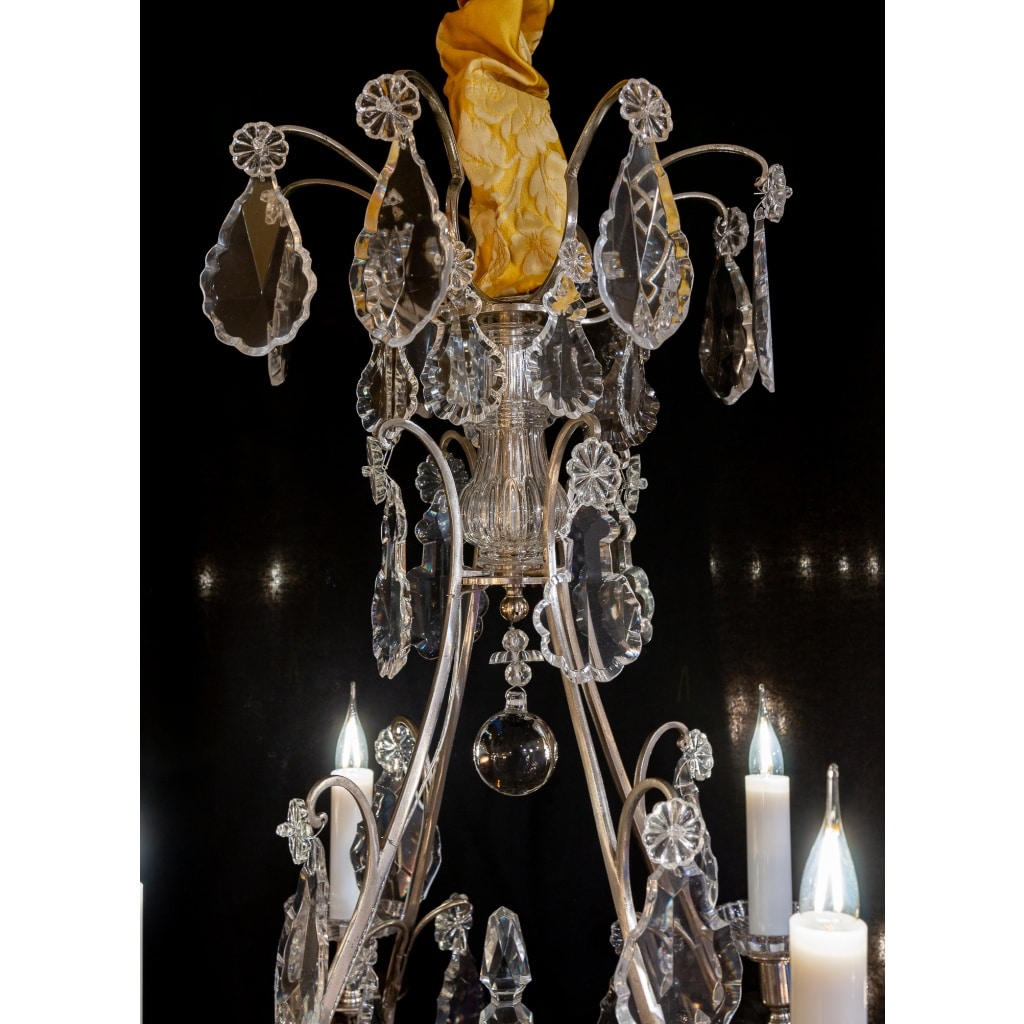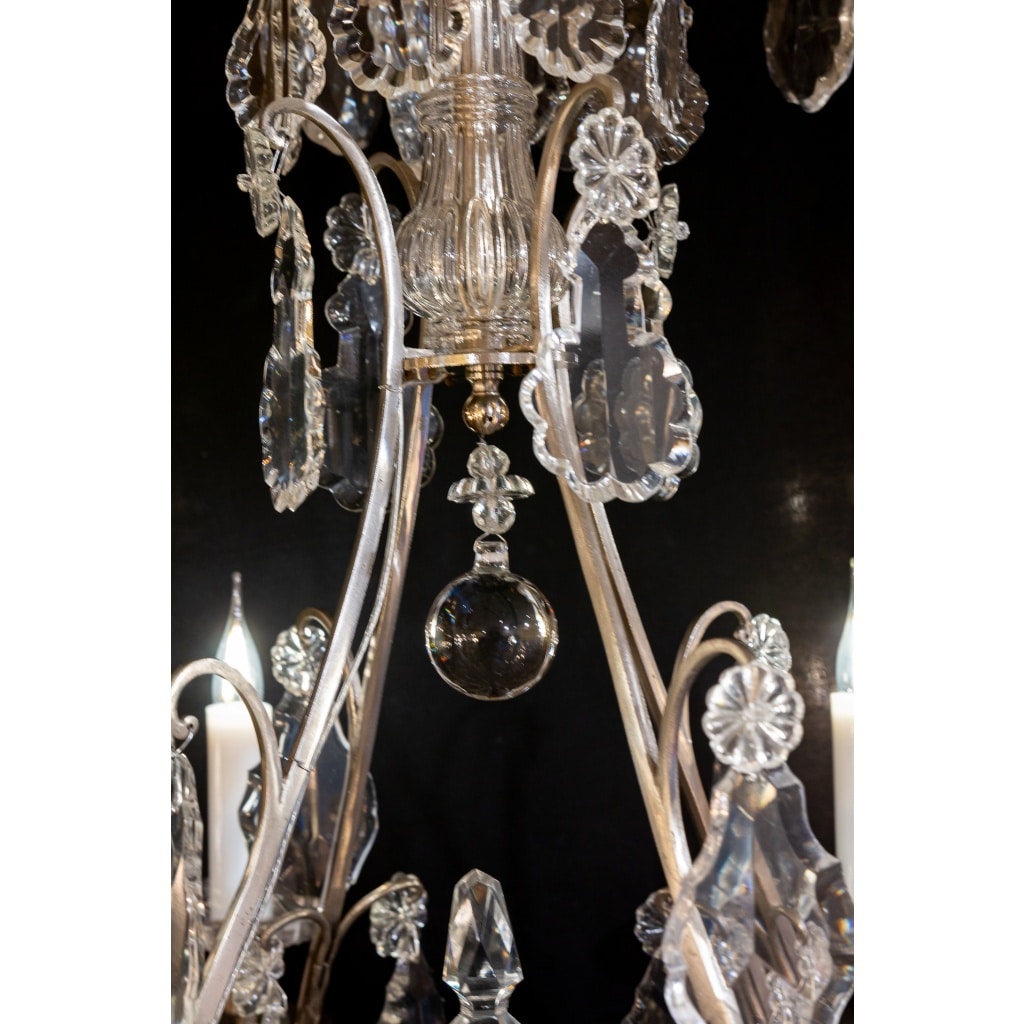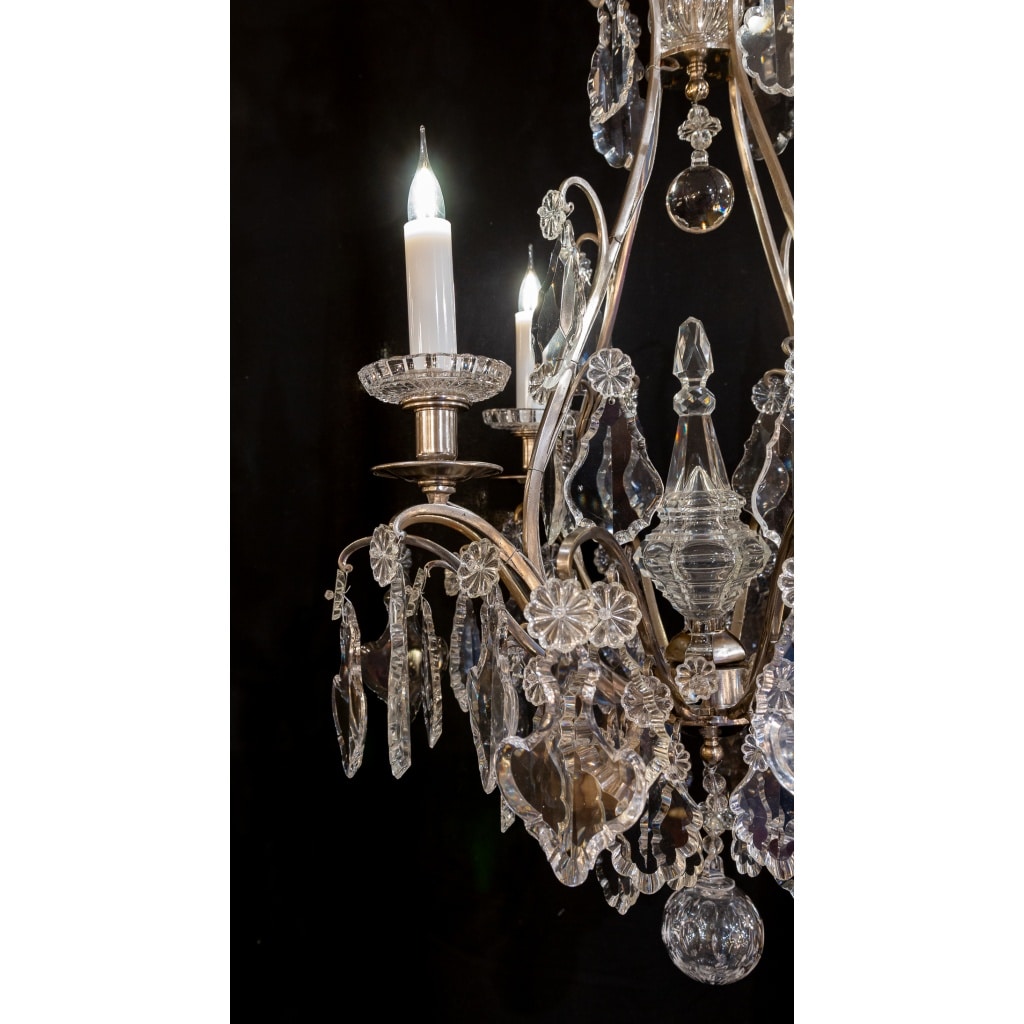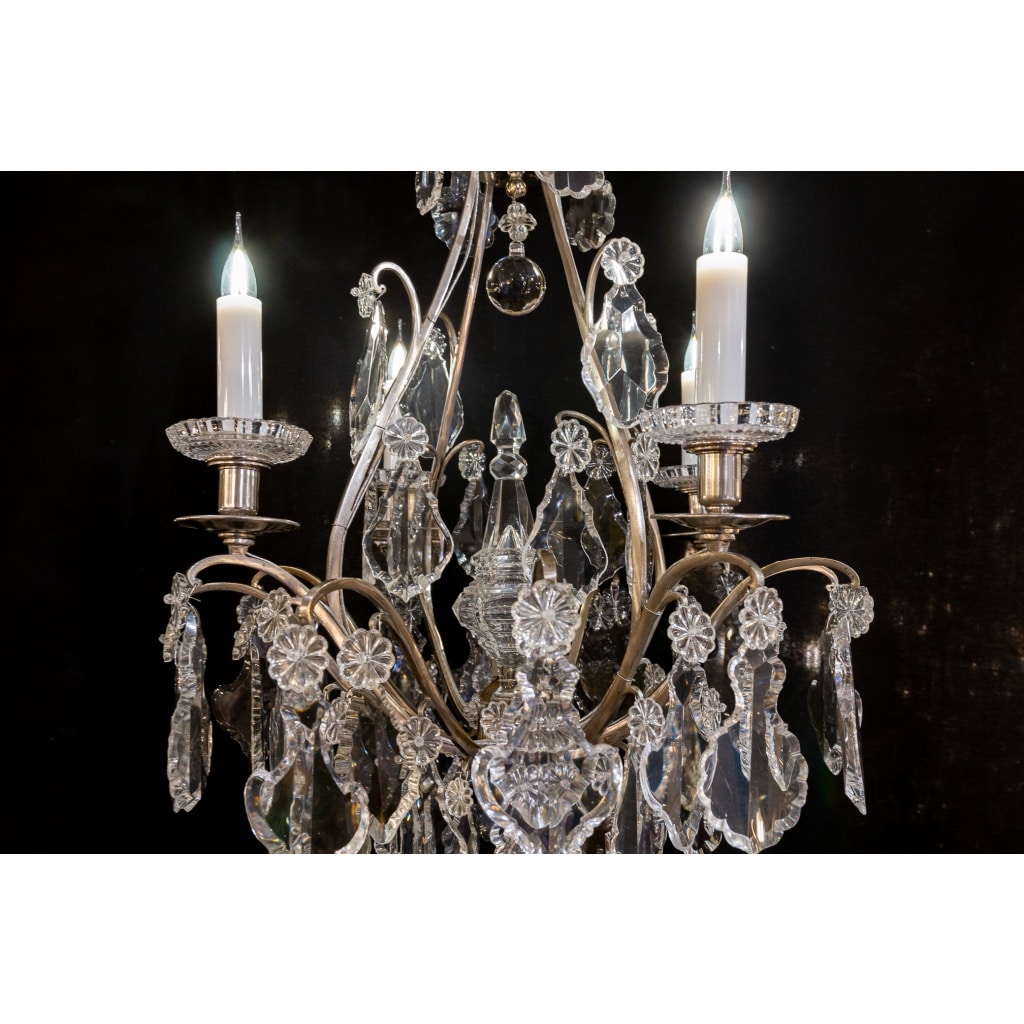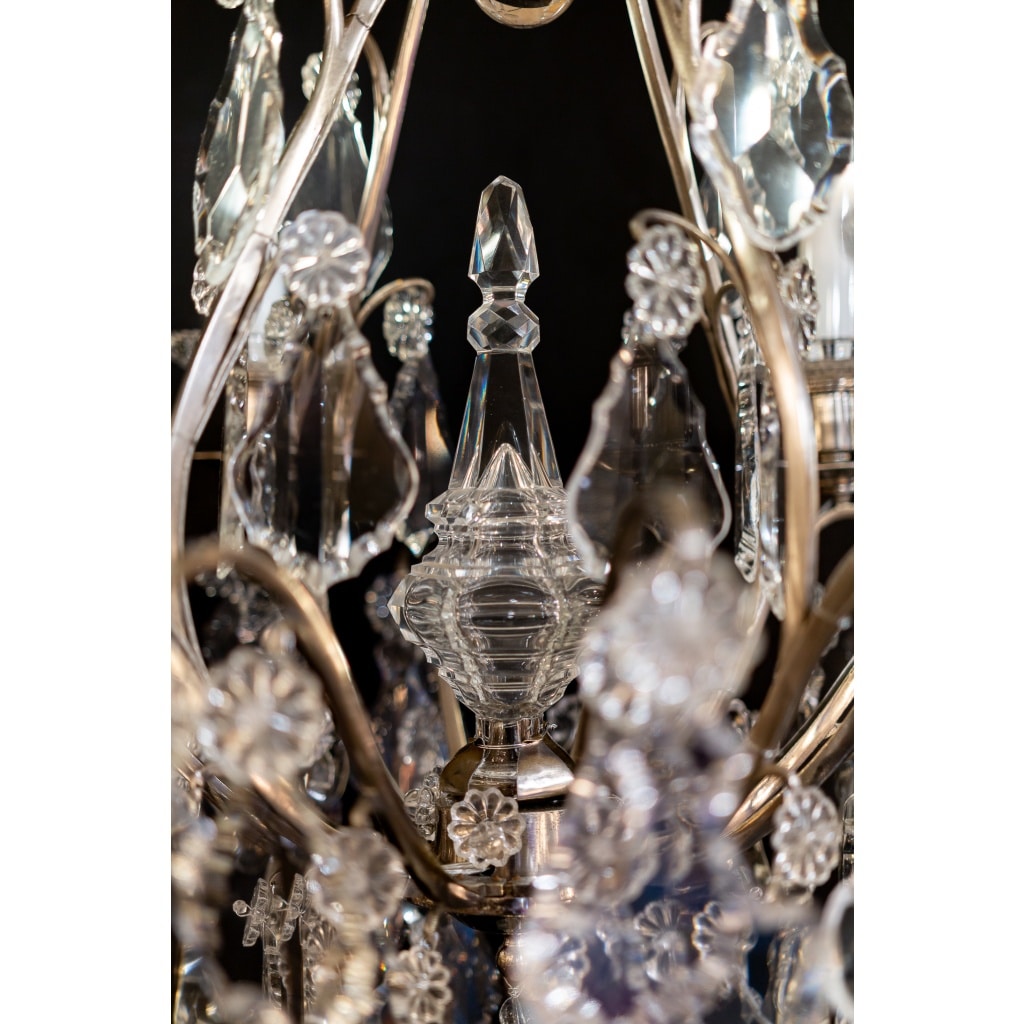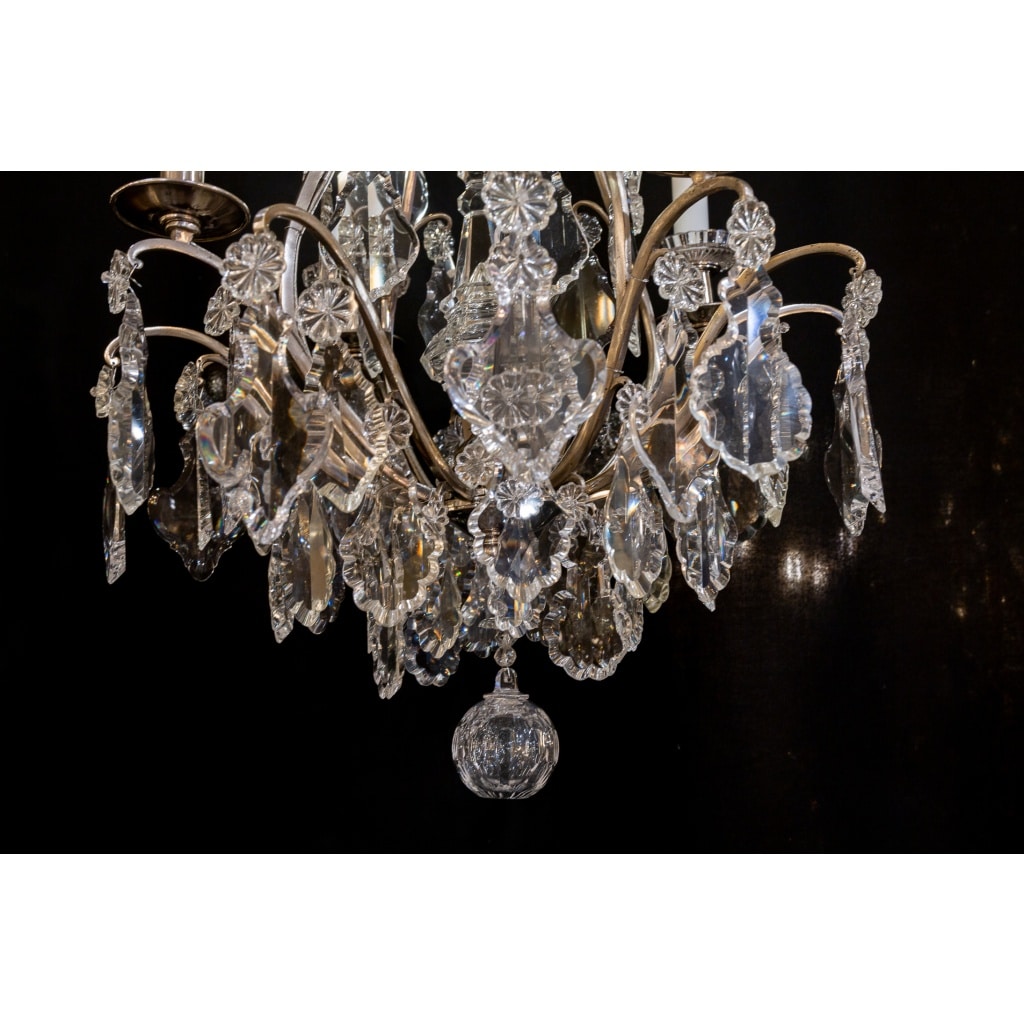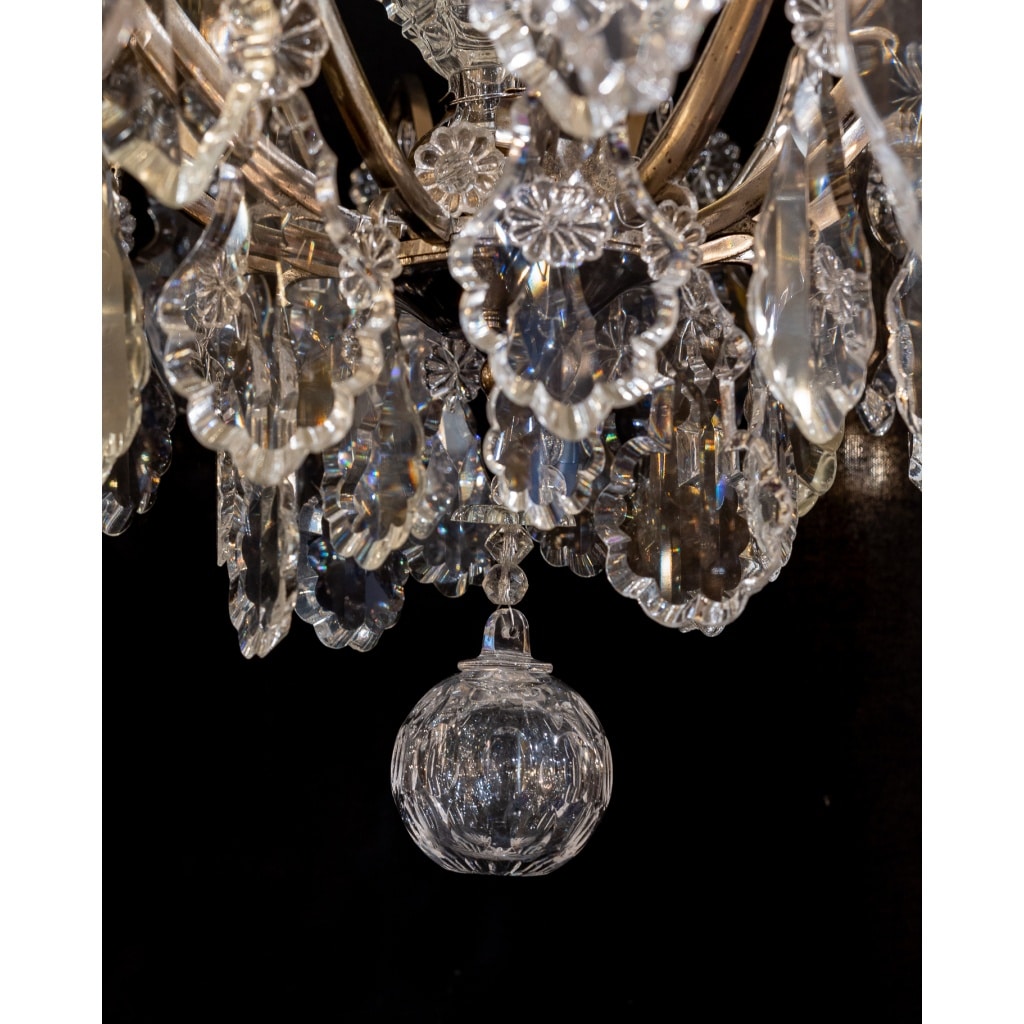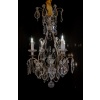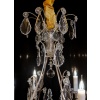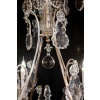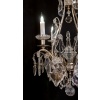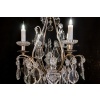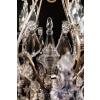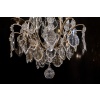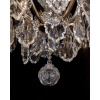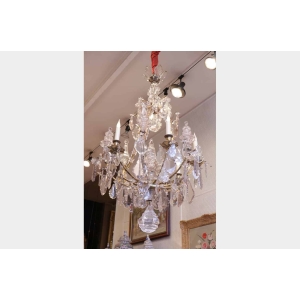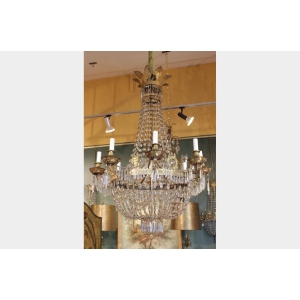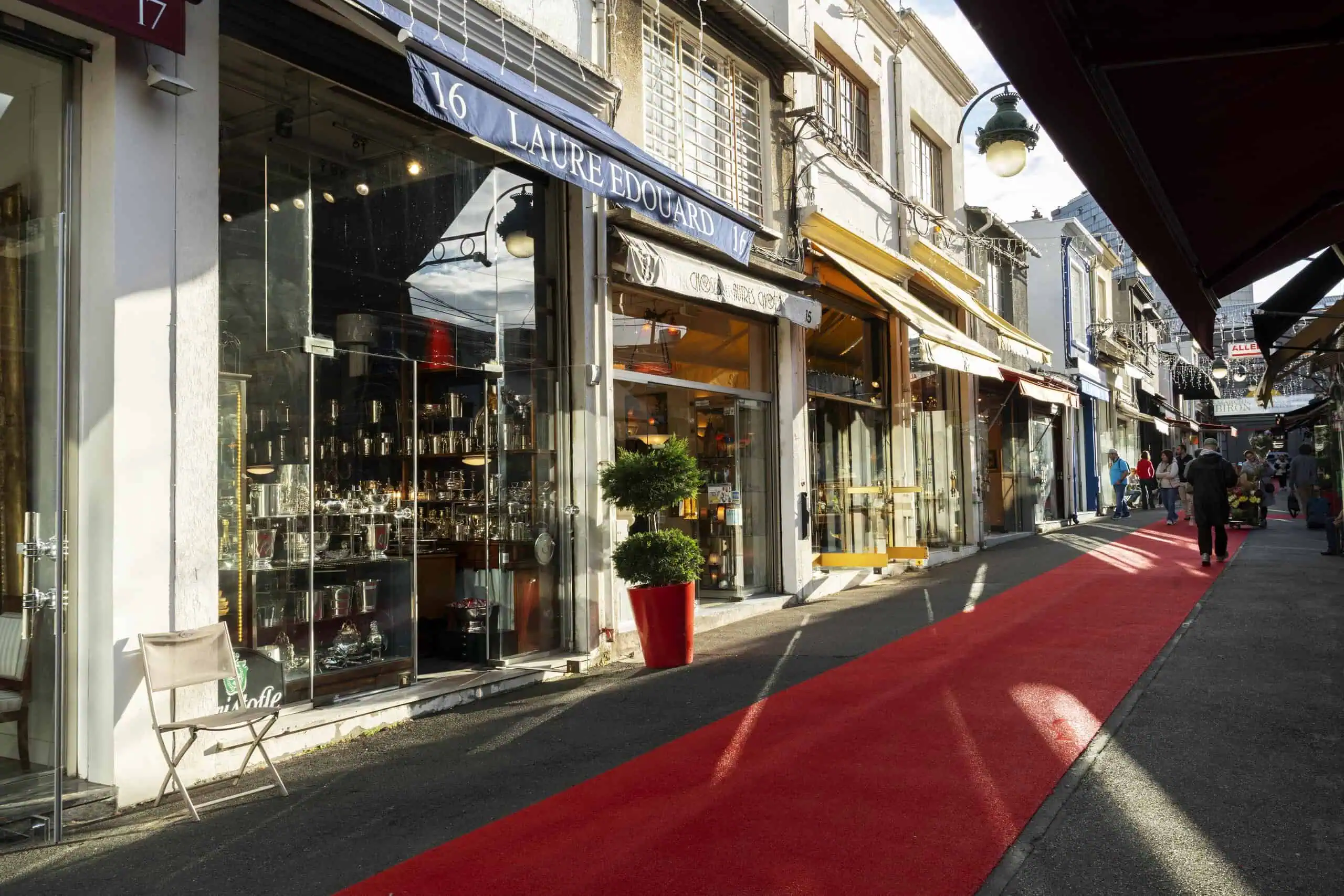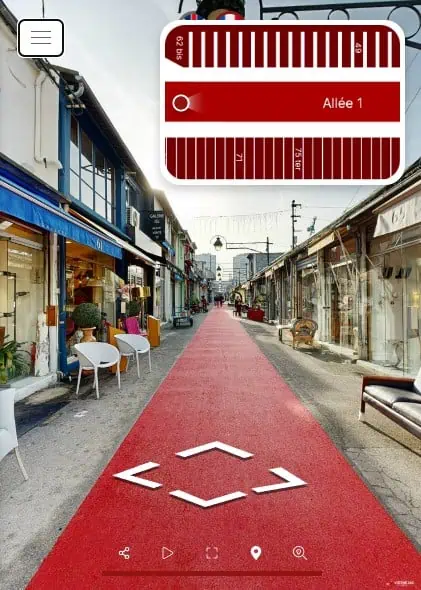Signé par les Cristalleries de Baccarat, petit lustre cage en bronze argenté et cristal taillé vers 1880-1890
Un charmant lustre de forme cage en bronze argenté et décor de cristal taillé composé ; de grandes plaquettes et d’un beau poignard central.
Le lustre se termine par une belle boule en cristal taille.
Beau travail français, dont le décor en cristal est signé par les Cristalleries de Baccarat vers 1880-1890.
Dimensions : Hauteur 85 cm – Diamètre 55 cm.
Notre lustre est dans un bon état de conservation. Il a été électrifié aux normes européennes, possibilités d’adaptation aux standards américains sur demande.
Baccarat :
En 1764, le roi Louis XV accorde à Louis-Joseph de Montmorency-Laval, évêque de Metz, l’autorisation d’établir une verrerie dans le village de Baccarat en Lorraine.
En 1824, Ismaël Robinet, ouvrier verrier de Baccarat, invente une pompe à air pistonné qui facilite le soufflage du verre. L’année suivante, Baccarat développe la technique du pressé-moulé.
En 1855, Baccarat participe à la première Exposition universelle parisienne, avec notamment deux candélabres et un lustre de dimensions monumentales.
En 1860, le 29 octobre, Baccarat dépose sa marque de fabrique au tribunal de commerce de Paris : une carafe, un verre à pied et un gobelet inscrit dans un cercle. D’abord imprimée sur une étiquette en papier, l’estampille sera ensuite directement gravée sur la pièce.
Baccarat est un cristal d’une excellente qualité, il ne contient pas moins de 31,7% de plomb, sans aucun default, un haut niveau d’exigence, voici ce qui caractérise la manufacture. La Cristallerie de Baccarat traverse les générations tout en restant un symbole de l’art de vivre à la Française.
Signed by the Cristalleries de Baccarat, small silver-plated bronze and cut crystal cage chandelier circa 1880-1890
A charming silver plated bronze and cut crystal chandelier with large plates and a beautiful central dagger.
The chandelier ends with a beautiful cut crystal ball.
Beautiful French work, whose crystal decoration is signed by Cristalleries de Baccarat circa 1880-1890.
Sizes: H 33.46 Inches. – D 21.65 Inches.
Our chandelier is in fine condition. It has been wired for electricity to European standards and can be upgraded to American standards on request.
Baccarat:
In 1764, French King Louis XV granted Louis-Joseph de Montmorency-Laval, Bishop of Metz, permission to establish a glassworks in the Lorraine village of Baccarat.
In 1824, Ismaël Robinet, a Baccarat glassmaker, invented an air-piston pump that facilitated glassblowing. The following year, Baccarat developed the press-molded technique.
In 1855, Baccarat took part in the first Paris Universal Exhibition, exhibiting two monumental candelabras and a chandelier.
In 1860, on October 29, Baccarat registered its trademark with the Paris Commercial Court: a carafe, a stemmed glass, and a beaker inscribed in a circle. Initially printed on a paper label, the stamp was later engraved directly onto the piece.
Baccarat crystal is of the highest quality, containing no less than 31.7% lead, with no defaults and the highest standards. Cristallerie de Baccarat has been passed down through the generations and remains a symbol of French art de vivre.

